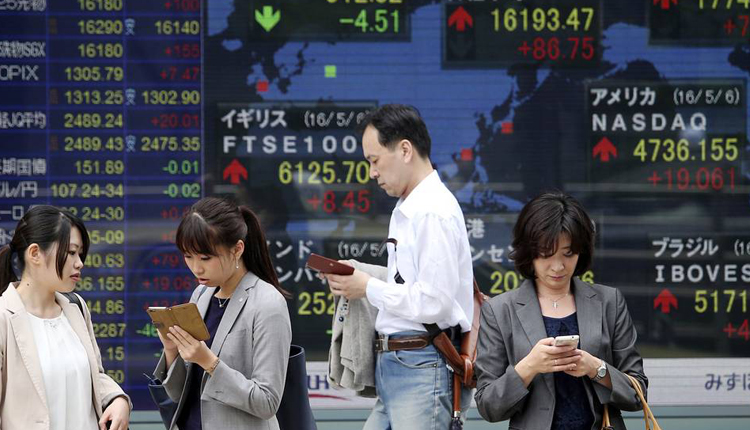Asian stocks traded mixed on Monday afternoon, while oil prices continued to rise as tensions between the U.S. and Iran lingered after the latter shot down an American surveillance drone.
Mainland Chinese stocks slipped by the afternoon, with the Shanghai composite down slightly, while the Shenzhen component declined 0.19% and the Shenzhen composite shedding 0.294%.
Over in Hong Kong, the Hang Seng index was 0.23% higher.
Japan’s Nikkei 225 was 0.11% higher in afternoon trade, while the Topix index gained 0.1%.
Over in South Korea, the Kospi traded fractionally higher.
Australia’s S&P/ASX 200 fell marginally as most sectors traded mixed. Australia’s central bank governor Philip Lowe said on Monday it would be legitimate to question the effectiveness of global monetary policy easing to boost economic growth even as the country itself is on a path to further lower domestic interest rates.
In the minutes of its June monetary policy meeting, the central bank had said it was “more likely than not” that further easing would be “appropriate,” following a decision to lower the cash rate by 25 basis points to 1.25%.
The U.S. dollar index, which tracks the greenback against a basket of its peers, was at 96.140 after slipping from levels above 97.5 last week.
The Japanese yen traded at 107.41 against the dollar after touching levels above 108.5 in the previous trading week. The Australian dollar changed hands at $0.6956 after rising from levels below $0.684 last week.
Meanwhile, a highly-anticipated meeting between Chinese President Xi Jinping and U.S. President Donald Trump is set to happen later this week at the G-20 summit in Japan as the two economic powerhouses seek to find a resolution to their protracted trade fight.
“I really cannot remember a G-20 as important as this, maybe with the exception of those that took place during the global financial crisis,” Stefan Hofer, managing director and chief investment strategist at LGT Bank Asia, told CNBC on Monday.
Tensions in the Middle East remain after the U.S. and Iran nearly came to blows last week after Tehran claimed it downed an American drone that violated its airpace, while Washington says it was operating in international airspace.
The Trump administration has also accused Iran of attacking two oil tankers in the Gulf of Oman, near the Strait of Hormuz — a critical transit route for global oil supplies. Iran has strongly denied involvement in the explosions that crippled the tankers.
For his part, Trump said the U.S. is prepared to negotiate with Iran with “no preconditions,” during an interview with NBC. He added he was not looking for war with Tehran, though he warned of “obliteration” if it comes.
Trump also said Saturday that the U.S. would impose “major additional sanctions ” against Iran on Monday.
“I think the chances of a conflict is, in our view, at least 50%. Conflict, not a full war, but a conflict which would disrupt supplies,” Fereidun Fesharaki, chairman of Facts Global Energy, told CNBC’s “Squawk Box” on Monday.
“We have to remember Iran is a regional superpower … They will strike back one way or the other and I think that the chances of tensions becoming bigger is very, very high in the near future,” said Fesharaki.
Oil prices were sent soaring last week amid the ongoing tensions in the Middle East. In the morning of Asian trading hours, prices continued to tick upward. The international benchmark Brent crude futures contract rose 0.46% to $65.50 per barrel, while U.S. crude futures added 0.71% to $57.84 per barrel.
Source: CNBC


